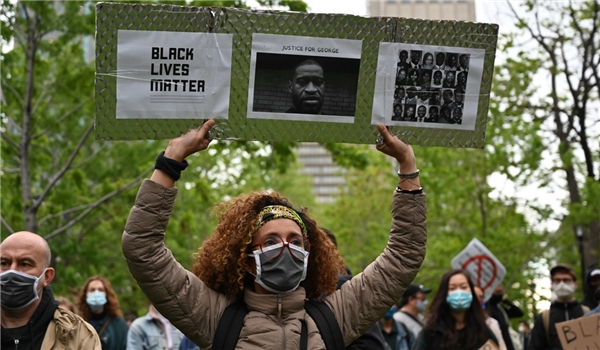
TEHRAN (FNA)- International demonstrations in Europe and elsewhere have broken out in protest of the death of George Floyd and American injustice.
Floyd died while in police custody last week, and video footage of his arrest and subsequent death went viral when it was discovered how he was treated by officers.
Protests that began in Floyd’s hometown of Minneapolis, Minnesota, have now spread to the international scene. Tens of Thousands gather daily in the international hubs holding signs saying “Black Lives Matter” and “Justice for George Floyd”.
As always, this is not the first time that the world community has witnessed such riots sparked by ethnics day racial conflicts in the US. Back in 2017, violent clashes between white supremacist groups and counter-protesters erupted in Charlottesville, Virginia. The coronavirus and presidential elections have both intensified the structural problems caused by racism in the country, making it more vehement and harder to contain.
Today’s uprisings sprang up in the era of President Trump that has seen an escalation of hate crimes and the double blow of a coronavirus pandemic and a historic economic meltdown. The police killing in Minneapolis of George Floyd could hardly have come at a more explosive time. And the violence and rage reflects that.
The social structural problems caused by racial discrimination are always present and easily witnessed, but under the current COVID-19 crisis, those problems have surfaced in a faster and stronger manner, and the grim consequences now make it impossible for the US government to pretend there is no such problems.
According to the statistics published by US media, African Americans have more potential diseases related to COVID-19, such as heart disease, diabetes, asthma and obesity. However, this is not the essential reason why African Americans are more vulnerable to the virus. The most fundamental reason is that the living conditions of African Americans are relatively poor compared with other ethnic groups.
For instance, decades of racial segregation and discriminatory housing policies have left many African Americans living in more densely populated areas, where it is more difficult to maintain social distancing and where air pollution is more severe, making them more vulnerable to illnesses.
Another development driving the public anger is the emergence of white-power demonstrations since Trump was elected in 2016, and the escalation of hate crimes. An FBI report released this past winter found they were up 12% nationally against individuals. And President Trump claimed that the economy was robust before the pandemic, income had remained largely flat among low-wage workers, who disproportionately are people of color.
Therefore, America's racial problems will remain unresolved in the long run. In terms of the economy, some white Americans believe that their jobs are being taken away by other ethnic groups and immigrants. Many whites even interpret Trump's "America First" policy as "White First". In the current election season, Trump's campaign rhetoric and tactics to solicit the support of white hardcore voters will further reinforce their sense of racial superiority.
Under the influence of the pandemic and Trump’s racist policies, expect the structural and systemic racial problems to become more obvious ahead of the elections, and the medical resources obtained by different classes and ethnic groups to become even more uneven. Such racial, structural and systematic differences, which are directly linked to people's daily lives, will only push the country into more divisions and riots in the long run.

No comments:
Post a Comment